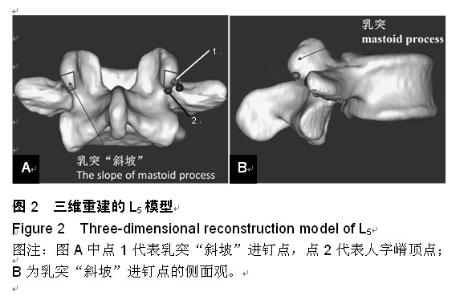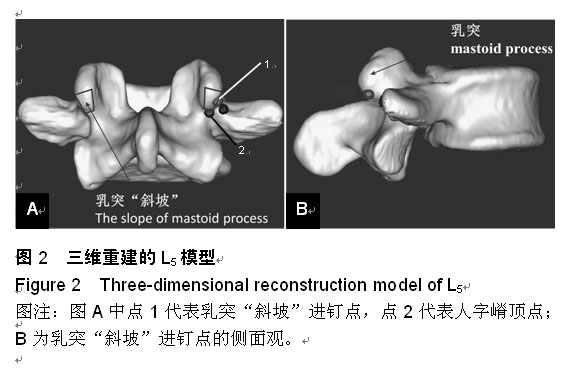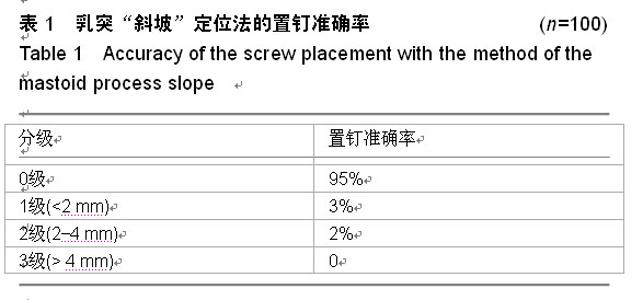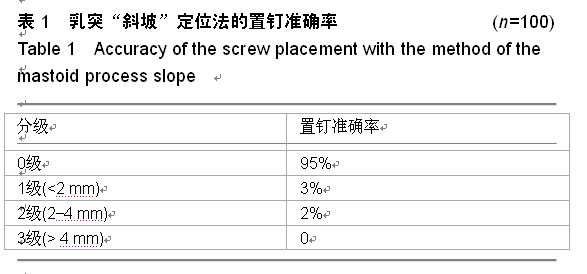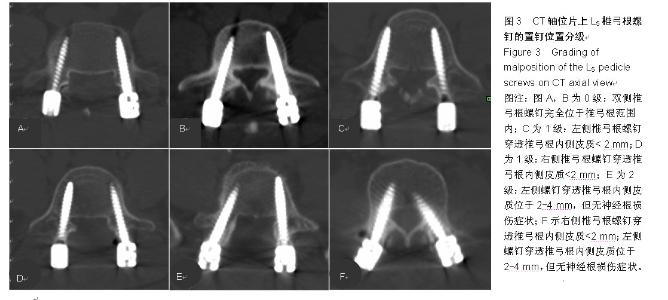| [1] Roy-Camille R, Saillant G, Mazel C. Internal fixation of the lumbar spine with pedicle screw plating. Clin Orthop Relat Res. 1986; (203):7-17.
[2] Boos N, Webb JK. Pedicle screw fixation in spinal disorders: a European view. Eur Spine J. 1997; 6(1):2-18.
[3] Pihlajamaki H, Myllynen P, Bostman O. Complications of transpedicular lumbosacral fixation for non-traumatic disorders. J Bone Joint Surg Br. 1997; 79:183-189.
[4] Jutte PC, Castelein RM. Complications of pedicle screws in lumbar and lumbosacral fusions in 105 consecutive primary operations. Eur Spine J. 2002; 11:594-598.
[5] Davne SH, Myers DL. Complications of lumbar spinal fusion with transpedicular instrumentation. Spine. 1992; 17:S184- S189.
[6] Blumenthal S, Gill K. Complications of the Wiltse pedicle screw fixation systems. Spine. 1993; 18:1867-1871.
[7] Esses SI, Sachs BL, Dreyzin V. Complications associated with the technique of pedicle screw fixation. Spine. 1993;18: 2231-2239.
[8] Hou S, Hu R, Shi Y. Pedicle morphology of the lower thoracic and lumbar spine in a Chinese population. Spine.1993;18(13): 1850-1855.
[9] Ebraheim NA, Xu R, Darwich M, et al. Anatomic relations between the lumbar pedicle and adjacent neural structures. Spine. 1997; 22(20):2338-2341.
[10] Mitra SR, Datir SP, Jadhav SO. Morphometric study of the lumbar pedicle in the Indian population as related to pedicular screw fixation. Spine. 2002; 27(5):453-459.
[11] Senaran H, Yazici M, Karcaaltincaba M, et al. Lumbar pedicle morphology in the immature spine: a three-dimensional study using spiral computed tomography. Spine. 2002; 27(22):2472- 2476.
[12] Li B, Jiang B, Fu Z, et al. Accurate Determination of Isthmus of Lumbar Pedicle: A Morphometric Study using Reformatted Computed Tomographic Images. Spine. 2004; 29(21):2438- 2444.
[13] Su BW, Kim PD, Cha TD, et al. An anatomical study of the mid-lateral pars relative to the pedicle footprint in the lower lumbar spine. Spine. 2009; 34(13):1355-1362.
[14] 崔新刚,丁自海,蔡锦方.胸腰椎棘突上缘根部与椎弓根关系的放射解剖学研究及意义[J].中国矫形外科杂志,2004,12(1):96-98.
[15] Weinstein JN, Spratt KF, Spengler D, et al. Spinal pedicle fixation: reliability and validity of roentgenogram-based assessment and surgical factors on successful screw placement. Spine. 1988; 13(9):1012-1018.
[16] Magerl FP. Stabilization of the lower thoracic and lumbar spine with external skeletal fixation. Clin Orthop Relat Res. 1984; (189):125-141.
[17] Krag MH, Van Hal ME, Beynnon BD. Placement of transpedicular vertebral screws close to anterior vertebral cortex. Description of methods. Spine. 1989; 14(8):879-883.
[18] 郑祖根,唐天驯,董天华,等.52例胸腰椎椎弓根的解剖学研究与Roy-Camille椎弓根钢板的临床应用[J].中华骨科杂志,1988, 8(5):391-393.
[19] 陈耀然,唐天驷,邱勇,等. 椎弓根的观察及临床意义[J].中华外科杂志,1982,27(10):578-580.
[20] 单云官,李俊锁,杨少华,等. 椎弓根形态学观察及其意义[J].中国临床解剖学杂志,1988,6(4):219-223.
[21] 侯树勋,史亚民.国人下胸椎及腰椎椎弓根形态学特点及临床意义[J].中华骨科杂志,1994,14(4):222-225.
[22] Ebraheim NA, Rollins J, Xu R, et al. Projection of the lumbar pedicle andits morphometric analysis. Spine. 1996; 21: 1296- 1300.
[23] 谭伦,吴超,罗小中.以椎板边缘对腰椎椎弓根螺钉进钉点的个体化定位[J].中国矫形外科杂志,2008,16(3):207-210.
[24] 王建华,尹庆水,夏虹,等.腰椎乳突与椎弓根螺钉入钉点关系的解剖学研究[J].美中国际创伤杂志,2005,4(3):11-13.
[25] 阎德强,谢志军,李炳辉,等.胸腰椎乳副突间凹进钉点的解剖学研究与应用[J].中国矫形外科杂志,2001,5(4):506-509.
[26] 杜心如,赵玲秀,张一模,等.腰椎人字嵴顶点椎弓根螺钉进钉方法的解剖学研究[J].中国临床解剖学杂志,2002,20(2):86-88.
[27] Gertzbein SD, Robbins SE. Accuracy of pedicular screw placement in vivo. Spine. 1990; 15(1):11-14.
[28] Hailong Y, Wei L, Zhensheng M, et al. Computer analysis of the safety of using three different pedicular screw insertion points in the lumbar spine in the Chinese population. Eur Spine J. 2007; 16(5):619-623.
[29] Attar A, Ugur HC, Uz A, et al. Lumbar pedicle: surgical anatomic evaluation and relationships. Eur Spine J. 2001; 10(1):10-15.
[30] Söyüncü Y, Yildirim FB, Sekban H, et al. Anatomic evaluation and relationship between the lumbar pedicle and adjacent neural structures: an anatomic study. J Spinal Disord Tech. 2005; 18(3):243-246.
[31] Robertson PA, Stewart NR. The radiologic anatomy of the lumbar and lumbosacral pedicles. Spine (Phila Pa 1976). 2000;25(6):709-715.
[32] Datir SP, Mitra SR. Morphometric study of the thoracic vertebral pedicle in an Indian population. Spine (Phila Pa 1976). 2004;29(11):1174-1181.
[33] 张丙磊,赵东升,余枫,等.腰5椎弓根分型及螺钉固定的相关解剖学测量[J].中国脊柱脊髓杂志,2011,21(2):33-37.
[34] 杨敬,常鑫,王强,等.腰椎“人”字嵴顶点定位的三维CT 影像研究[J].中国临床解剖学杂志,2013,30(1):60-63.
[35] Suk SI, Lee SM, Chung ER, et al. Selective thoracic fusion with segmental pedicle screw fixation in the treatment of thoracic idiopathic scoliosis: more than 5-year follow-up. Spine. 2005; 30(14):1602-1609.
[36] Idler C, Rolfe KW, Gorek JE. Accuracy of percutaneous lumbar pedicle screw placement using the oblique or "owl's-eye" view and novel guidance technology. J Neurosurg Spine. 2010; 13(4):509-515.
[37] Amiot LP, Lang K, Putzier M, et al. Comparative results between conventional and computer-assisted pedicle screw installation in the thoracic, lumbar, and sacral spine. Spine (Phila Pa 1976). 2000;25(5):606-614.
[38] Laine T, Lund T, Ylikoski M, et al. Accuracy of pedicle screw insertion with and without computer assistance: a randomised controlled clinical study in 100 consecutive patients. Eur Spine J. 2000; 9(3):235-240.
[39] Castro WH, Halm H, Jerosch J, et al. Accuracy of pedicle screw placement in lumbar vertebrae. Spine. 1996; 21(11): 1320-1324.
[40] Zindrick MR, Wiltse LL, Doornik A, et al. Analysis of the morphometric characteristics of the thoracic and lumbar pedicles. Spine. 1987; 12(2):160-166. |
